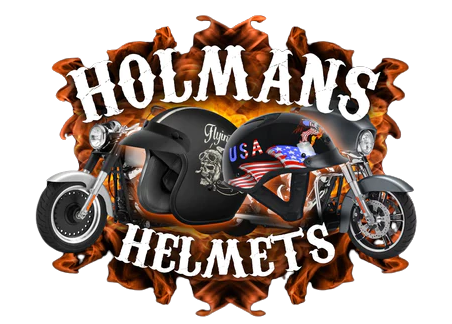The Top 5 Features You Must Look For When Choosing The Perfect Motorcycle Helmet
1. Safety Certification
When selecting a motorcycle helmet, the foremost feature to consider is its safety certification. Helmets that meet safety standards have undergone rigorous testing to ensure they can protect you in the event of a crash. Look for certifications such as DOT (Department of Transportation), ECE (Economic Commission for Europe), or Snell, which are indicators of a helmet’s ability to withstand impact and provide adequate protection.
Certification marks are usually found on the helmet’s exterior or interior and signify compliance with specific safety criteria. It’s essential to verify that the helmet you choose is appropriately certified for your region.
Remember, a helmet’s safety certification is a testament to its potential lifesaving capabilities. Never compromise on this feature.
Here is a list of common safety certifications to look for:
- DOT
- ECE
- Snell
- SHARP (Safety Helmet Assessment and Rating Programme)
- CCC (China Compulsory Certificate)
2. Helmet Type
Choosing the right helmet type is crucial for both comfort and protection. Full-face helmets offer the most comprehensive coverage, shielding your entire head and face. For those seeking a balance between protection and openness, modular helmets provide a versatile solution with their flip-up visor and chin bar.
Open-face or three-quarter helmets allow for greater visibility and airflow, but at the cost of reduced facial protection. Half helmets, while offering the least coverage, appeal to riders looking for the feeling of freedom and minimalism.
When selecting a helmet type, consider the riding you plan to do. A full-face helmet is best for high-speed or long-distance riding, while an open-face or half helmet might be suitable for casual city trips.
Here’s a quick reference to help you decide:
- Full-face: Maximum protection, suitable for all types of riding
- Modular: Good protection, convenient for those who wear glasses
- Open-face: Good visibility, ideal for low-speed cruising
- Half helmet: Minimal coverage, best for short, leisurely rides
3. Fit and Comfort
Ensuring a proper fit is crucial when selecting a motorcycle helmet. A helmet that fits well will stay securely in place during a ride, reducing the risk of injury in the event of an accident. It’s important to measure your head accurately and consult the manufacturer’s sizing chart.
Comfort is equally important for long rides. Look for helmets with adequate padding and ergonomic features that alleviate pressure points. Here are some aspects to consider:
- Interior padding material
- Strap design and adjustability
- Weight distribution
A helmet that’s too tight can cause discomfort, while one that’s too loose can compromise safety.
Always try on multiple helmets to find the one that offers the best combination of safety, fit, and comfort. Remember, a helmet is an investment in your safety and well-being on the road.
4. Visibility
Ensuring clear visibility while riding is crucial for safety and comfort. A helmet with good visibility will help you keep track of your surroundings and react quickly to any potential hazards. Look for helmets with large eye ports that accommodate a wide field of view.
Visors play a significant role in visibility, especially in varying light conditions. A helmet might come with different visor options such as clear, tinted, or photochromic, which adapts to light changes:
- Clear visors are best for night riding or low-light conditions.
- Tinted visors reduce glare and are ideal for sunny days.
- Photochromic visors adjust automatically to the light conditions, offering versatility.
Remember, the visor should also be easy to clean and scratch-resistant to maintain clear vision throughout your ride.
Additionally, consider helmets with anti-fog technology or pin-lock systems to prevent the visor from fogging up, which can severely impair your visibility.
5. Ventilation
Proper ventilation in a motorcycle helmet is crucial for both comfort and safety. Good airflow helps to prevent the visor from fogging up, maintaining clear visibility during your ride. It also plays a significant role in keeping the rider cool, especially on warmer days.
Ventilation systems can vary significantly between helmet models. Some helmets feature adjustable vents that allow riders to regulate the amount of airflow, while others have fixed venting systems. Here’s a quick guide to the types of vents you might encounter:
- Intake Vents: Located at the front, they let cool air in.
- Exhaust Vents: Found at the back, allowing warm air to escape.
- Chin Vents: Help to defog the visor and provide air to the mouth area.
It’s important to try on helmets and test the ventilation system to ensure it meets your needs. A helmet that feels stuffy or causes you to overheat can quickly become a distraction, compromising your focus on the road.
